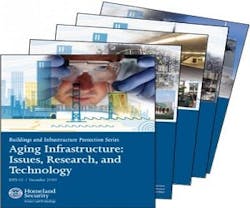Building and Infrastructure Protection
In the facility manager’s ideal world, every building would be built like a fortress to withstand any emergency. In reality, construction costs can be significant and engineers “build to code.” Meeting minimal safety codes can result in situations that provide minimum comfort and protection when disaster strikes.
Researchers at the Homeland Security's Science and Technology Directorate have come up with a series of publications aimed at engineers, architects, building owners, city planners, and emergency managers that bring years of data together to make buildings terror and nature resilient. The Building and Infrastructure Protection Series (BIPS) provides these audiences a set of aids for designing critical infrastructure to withstand all kinds of hazards…at a cost that won't break the budget.
"This series lays the foundation for designing a new generation of resilient buildings," says Mila Kennett, who oversees the series in S&T's Infrastructure Protection and Disaster Management Division, where she leads the Structural Resilience Branch. An architect by training, Kennett came from the Federal Emergency Management Agency (FEMA), where she edited a similar publication series after 9/11. Several of the BIPS guides expand upon and update her highly regarded FEMA guides.
The BIPS series comprises seven documents, four software applications, one website, and one training course.
For more information, visit http://www.dhs.gov/files/programs/scitech-bips-tools.shtm.
